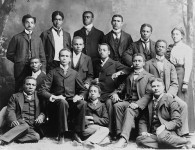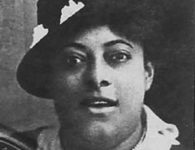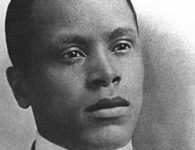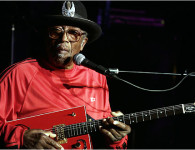Photo credits: The Baltimore Afro-American newspaper archives
On this date in 1892, the first issue of the Baltimore Afro-American newspaper went on sale. This Black owned and operated newspaper has crusaded for racial equality and economic advancement for African- America for more than a century.
John Henry Murphy Sr., a former slave, started the paper when he merged his church publication, The Sunday School Helper with two other church publications, The Ledger and The Afro-American. By 1922, Murphy moved the newspaper from a one-page weekly church publication into the most widely circulated Black paper on the Atlantic coast. Following Murphy’s death that year his five sons continued to manage The Afro-American. The Afro-American rose to national prominence while under the editorial control of Carl Murphy who was its editor-publisher for 45 years. The newspaper was circulated in Baltimore, Washington, D. C., Philadelphia, Richmond, and Newark.
At one time there were as many as 13 editions circulated across the country. The Afro-American’s status as a Black paper profoundly affected social change on a national scale. The editorial pages of The Afro-American were used to push for the hiring of Blacks by Baltimore’s police and fire departments; to press for Black representation in the legislature; and for the establishment of a state supported university to educate Blacks.
In the 1930s The Afro-American launched a successful campaign known as “The Clean Block” campaign, which is still in existence today. The campaign developed into an annual event and was aimed at improving the appearance of, and reducing crime in, inner-city neighborhoods. The Afro-American also campaigned against the Southern Railroad’s use of Jim Crow cars, and fought to obtain equal pay for Maryland’s Black schoolteachers. During World War II, The Afro-American stationed several of its reporters in Europe, the Aleutians, Africa, Japan, and other parts of the South Pacific, and provided its readers with first hand coverage of the war.
In the 1950s the newspaper joined the NAACP in the latter’s suit against the University of Maryland Law School for its segregationist admission policies. Their combined efforts eventually led to the U. S. Supreme Court’s 1954 decision outlawing segregated public schools. The Afro-American has employed many notable Black journalists and intellectuals including Langston Hughes, William Worthy and J. Saunders Redding, and artist Romare Bearden began his career as a cartoonist there in 1936.
Following Carl Murphy’s death in 1967, his daughter Frances L. Murphy II served as chairman and publisher. In 1974, John Murphy III, Carl’s nephew, was appointed chairman and eventually became the publisher. Fourth-generation members of the Murphy family, John J. Oliver, Jr. and Frances M. Draper, continue to manage the paper in recent years.
In the 21st century, the paper has circulated in two cities; Baltimore and Washington D.C.
Source: The Encyclopedia of African American Heritage by Susan Altman; Publisher: Facts on File, Inc





















No comments